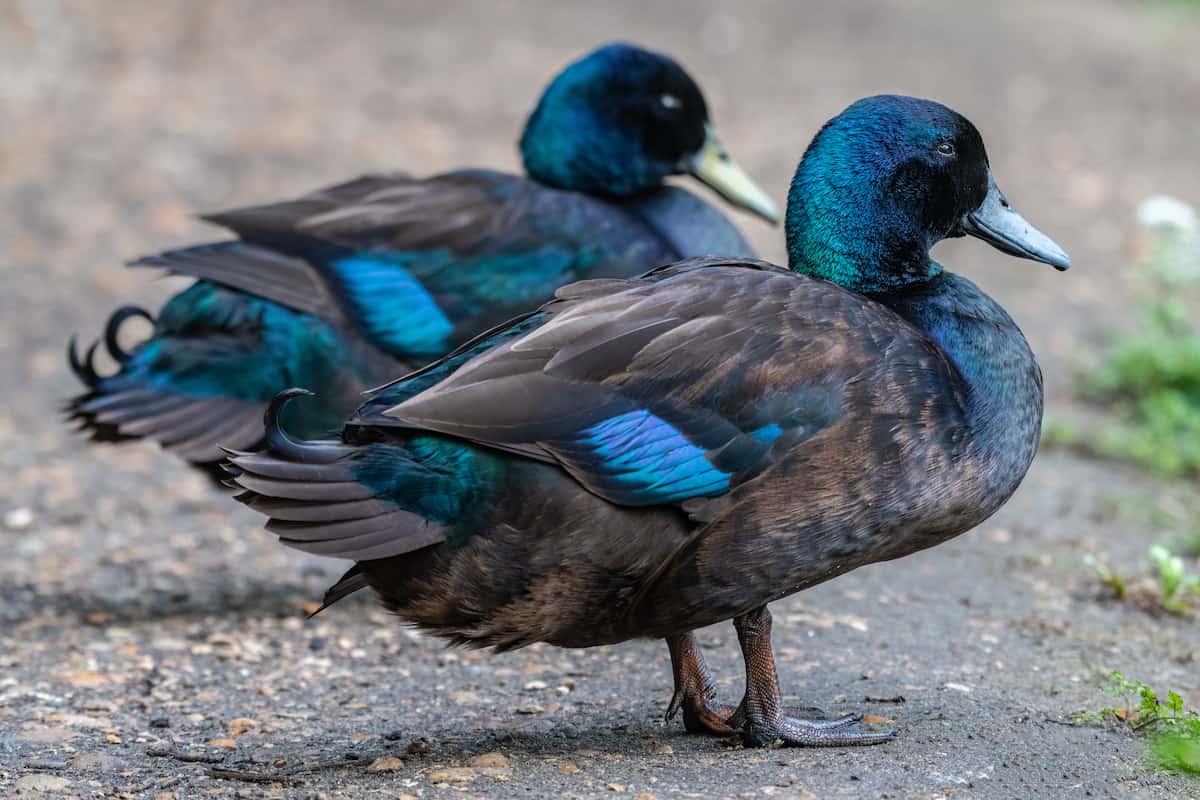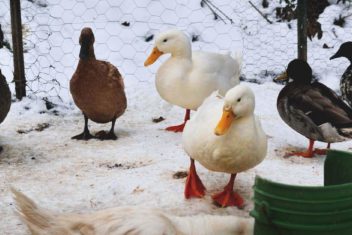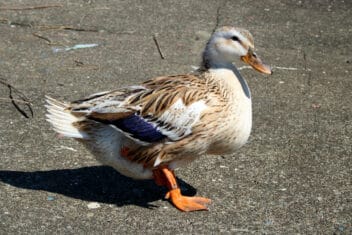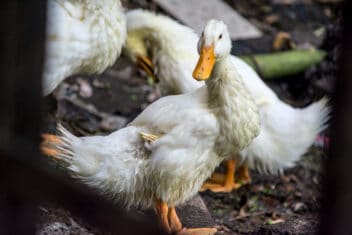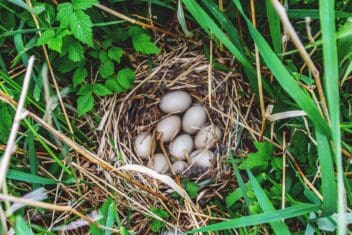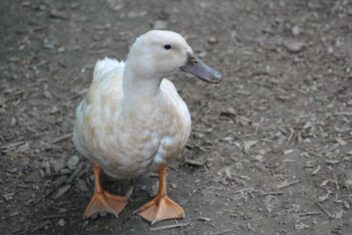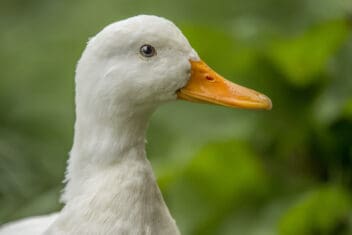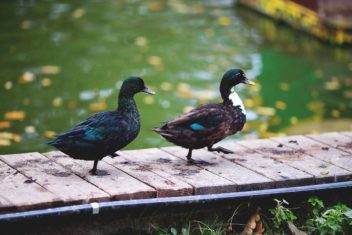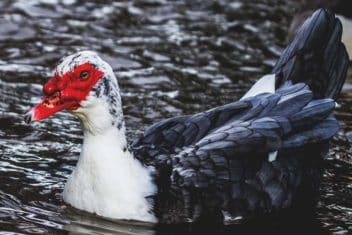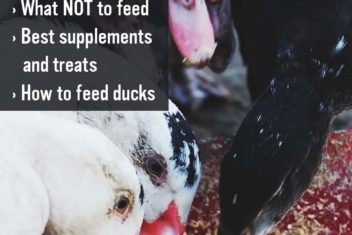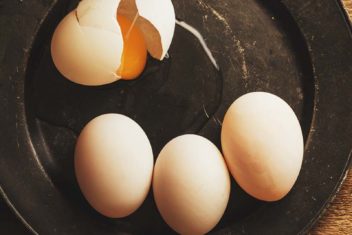In the chicken keeping world, chicken keepers often enjoy expanding their flock for rainbow egg baskets. Who says duck keepers can’t have some fun too? When a Cayuga duck starts laying eggs, the shade can be a charcoal black, slowly fading to a light gray over the course of the laying cycle. In addition to their unique eggs, Cayugas walk around sporting a stunning, beetle green sheen that makes them a joy to keep in the flock.
About Cayuga Ducks
John S. Clark brought the Cayuga ducks to the Finger Lakes region of New York around 1840, where the ducks earned their name from Cayuga Lake.
Cayugas gained a large amount of popularity after their introduction to New York and quickly spread to other parts of the country. Around 1874, Cayugas gained recognition by the American Poultry Association and were accepted into the Standard of Perfection.
Cayuga Duck Characteristics
1. Size and Weight
Cayuga ducks were bred to be a dual-purpose breed, so these birds have a bit more meat on their bones than some breeds. Drakes or male ducks normally weigh approximately 8 pounds at full-grown weight. Hen ducks typically weigh slightly less, tipping the scales around 7 pounds when fully grown.
2. Temperament
This breed is well suited to be a pet duck because of its charming and sweet personality. If socialized from an early age, Cayugas become excellent companions for their human caretakers. Cayuga hens also have an extremely strong inclination to go broody and raise their ducklings with caring and nurturing dispositions.
3. Egg Production
Many duck breeds can lay about 300 eggs per year, but Cayugas don’t have such impressive egg production. Although their eggs are unique and very eye-catching, Cayugas only lay between 100 and 150 eggs in a year.
4. Meat Production
Before Pekins came along, Cayugas were one of the main meat-producing ducks on the market. The meat on this bird is still good quality meat, but there have been problems encountered when it comes to achieving a perfectly clean carcass.
The black pin feathers on Cayugas stand out very clearly against light skin and can give an unkempt look about the carcass. For people that don’t consider duck skin a necessity, they simply skin the bird to avoid having to pluck black pin feathers.
Taking Care of Cayuga Ducks
1. Feeding and Nutrition
Cayuga ducks are excellent foragers and have the ability to forage a large amount of their own diet when given the area to do so. However, it is always important to make sure your ducks have a well-regulated diet and are receiving all the necessary vitamins and minerals to thrive.
For those that have raised ducks, Cayugas require the same diet as most ducks and are simple ducks to maintain. If you’re new to the world of ducks, take the time to learn about what to feed ducks in order to raise the healthiest birds possible.
2. Housing and Fencing
Most ducks have about the same housing and fencing requirements in order to stay happy and living comfortably. Cayugas will thrive in a properly built duck house with approximately 5-6-square feet per duck. In the run, a minimum of 12-15-square feet per duck will provide enough space to ensure everyone has room to flip and move around freely.
Wherever your ducks get out to play during the day, the largest source of water you can provide for your ducks is important. Some people can’t manage more than a kiddie pool while others have an entire duck pond.
Remember that water is important to the wellbeing of a duck’s life and don’t acquire more ducks than you can comfortably provide water for.
3. Health Issues and Care
If you want a robust and hardy duck, Cayugas are the duck for you. More than once, Cayugas have been noted as the hardiest domesticated duck available.
All ducks can be susceptible to common illnesses, and Cayugas are certainly no exception. However, this breed does not have any specific health issues to worry about, which makes them an easier duck to raise than some.
4. Breeding
For those planning on breeding Cayugas, they will make a fun duck breed with a few unique challenges. Due to the fact that egg color can range from nearly white to charcoal black, Cayuga eggs will not always be easy to candle. In fact, most black and dark gray eggs will likely be impossible to candle with any kind of success.
One especially helpful thing about breeding Cayugas is the help you can expect from your hens. Since Cayugas have a strong tendency to go broody, you may end up with some of your hens raising a few batches every year.
Cayuga Breed Alternatives
1. Rouen
Although there is no duck with a full-body beetle green sheen like the Cayuga, Rouen ducks have a beautiful green head like Cayugas or Mallards. Rouens are primarily a meat duck, and like Cayugas, they don’t have the best egg production in the world.
2. Silver Appleyard
Silver Appleyard ducks don’t resemble Cayugas in appearance, but they have a lot to offer. Like Cayugas, Silver Appleyards are a dual-purpose breed, although sporting much better egg production than Cayugas.
Did You Know?
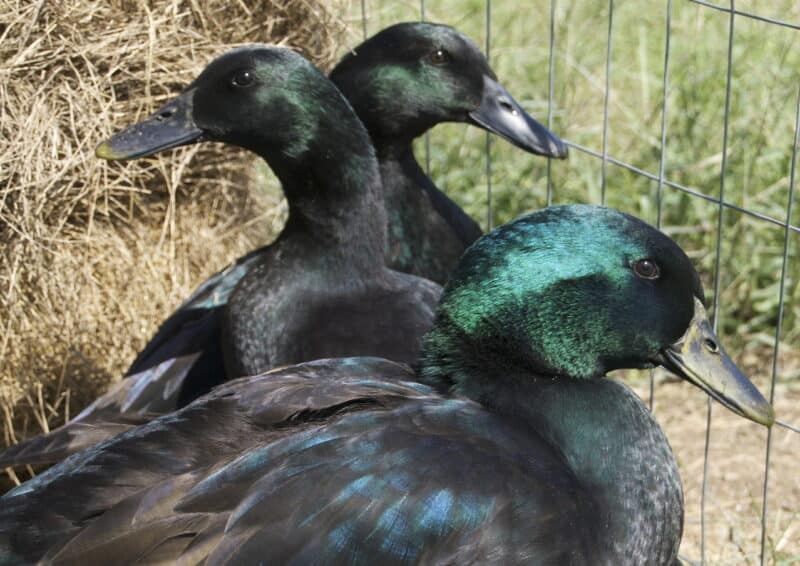
Although hens can still be slightly noisy occasionally, Cayuga ducks are much quieter than most ducks. For those that don’t love really noisy ducks, this breed is perfect for keeping the volume down around the farm.
This breed is undoubtedly one of the most unique birds you can add to your farm. Really, how many people have black eggs in their egg carton? Ducks from good breeding stock may be slightly pricey to come by, but most people would definitely tell you that Cayugas are worth it.
